Table of Contents
You can either add more spring pressure to stiffen up your suspension or back it off to get a plusher ride. Many shocks have a collar with several slots; turning it changes the spring pressure or amount of preload. Put the ATV on a stand so the wheels are off the ground: This allows the collars to turn more easily.
You need to make sure your tires are aired up to the proper pressure before you do anything else.
If…Set Your Ride Height/Preload.
The first thing you need to do to your shocks is set your ride height. This is done…Adjust Your High Speed Clicker
Adjusting clickers is where things start to get really fun. If you have high- and…Adjust Your Low-Speed Clicker
If you have a low speed clicker, adjusting it will take a little more finesse. You’ll…More …
What is the adjustment on shocks? The adjustment found on most production shocks is a compression adjustment; it helps in the small bumps, G-outs and braking bumps but does not have a huge effect on big jumps. Most shocks use a needle valve. To find out if you have the needle type of adjuster, screw it all the way in until it stops.
What is preload on an ATV shock? Preload, low-speed compression and rebound are the most commonly found on production ATV shocks. Preload. This is the spring-tension adjustment on most shocks. On utility vehicles’ shocks and even some sport quads’ front ends, this is your only means of compression adjustment.
Can shocks be added to shocks? On utility vehicles’ shocks and even some sport quads’ front ends, this is your only means of compression adjustment. You can either add more spring pressure to stiffen up your suspension or back it off to get a plusher ride. Many shocks have a collar with several slots; turning it changes the spring pressure or amount of preload.
What are the parts of an ATV shock? Preload, low-speed compression and rebound are the most commonly found on production ATV shocks. This is the spring-tension adjustment on most shocks.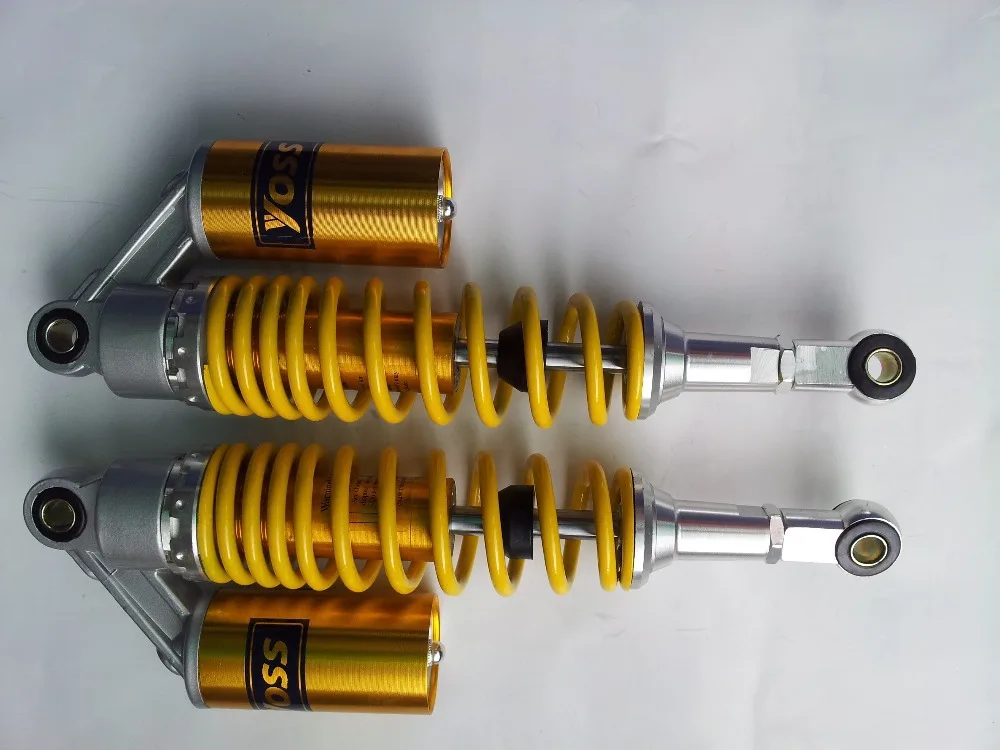 On utility vehicles’ shocks and even some sport quads’ front ends, this is your only means of compression adjustment.
On utility vehicles’ shocks and even some sport quads’ front ends, this is your only means of compression adjustment.
Adapters aside, using a tire pump on your shocks can simply damage them – the goal of a pump that’s made for inflating tires is to move a lot of air with little pressure, while shock pumps do so the other way around.
Preload is used to adjust the shock or spring to the correct range of operation within the suspension’s travel-more preload will raise the bike up on its suspension, keeping you near the top of its travel. With less preload, the bike sits lower and closer to the bottom of its suspension travel.
– Use Better Fuel.
– Upgraded Air Filter.
– Adjust The Throttle Limiter Screw.
– Change Tire Size, Weight, And Pressure.
– Add A Nitrous Kit.
– Upgrade The Exhaust.
– Change The Gear Ratio.
– Install A Big Bore Kit.
Air Pressure Guide For All Air Front Suspension Forks
—————————————————–
Rider Weight
<140 lbs.
140-160 lbs.
160-180 lbs.
A good indication that you’re relying on preload too much is if the bike has no sag at all under its own weight (with you NOT on the bike). Ideally, the bike will sag a small amount without you on it (5% or so) and then reach the desired 25-30% sag with you on the bike in normal riding position.
Polaris
– Upgrade Your Gas. Car, dirt bike, lawn mower or ATV. …
– Lighter Wheels. If you’re still riding on stock wheels or somewhere along the way added on steel wheels you can save some serious weight by replacing what you have with aluminum wheels. …
– New Grips. …
– Add a Slip On. …
– Wider Stance. …
– Tire Pressure. …
– Physical Fitness. …
– New Spark Plug.
For the rear shock, start at about half of your rider weight for air pressure. You will have to adjust from here, but you will want to achieve the proper SAG for your frame, as recommended by your frame manufacturer. Typically this is somewhere between 30-40% of overall travel.
– Add Zip Tie. Fit a zip tie around the shaft of the rear shock. …
Fit a zip tie around the shaft of the rear shock. …
– Extend The Shock. Fully extend the rear shock and measure the distance between the lip seal and the oil ring to get the figure for the shock’s total travel. …
– Add Air. Re-spring the shock. …
– Know Your Numbers. …
– Add Air. …
– Understand Sag. …
– Check Sag Level. …
– Adjust Sag Level.
To adjust the preload on your bike’s rear shock, you will need a C-spanner to loosen the top locking ring and spin it up the shock to gain access to the adjuster ring. If you want to increase preload so the spring has less travel and to make the bike feel stiffer, turn the adjuster ring clockwise.
Best All-Around ATV – Yamaha Grizzly 700 EPS For the best all-around ATV, the battle rages between the Suzuki King Quad 750 AXi and the Yamaha Grizzly 700 EPS. These two remain the contenders not for being the most powerful, but for being the most powerful while also weighing 100 lbs.
Spring preload pushes the tire down and makes the suspension work. On big bumps at speed the spring preload pushes the tires down to better follow the terrain and make a smoother, more controlled ride. Under articulation the spring preload increases tire contract pressure improving traction.
Back to top of page
Learning how to adjust your ATV shocks might be the single most important way to improve your ride. After all, properly adjusted shocks can make every bump feel smoother, give you more traction, and give you better control.
The best part, though, is that the way to tweak and test your shocks is by going for a ride! Adjustments take no time at all, and you’ll feel the difference immediately. Talk about instant gratification.
But before we get into the nuts and bolts of making adjustments, we’ll break down exactly what it is that shocks do and how they do it.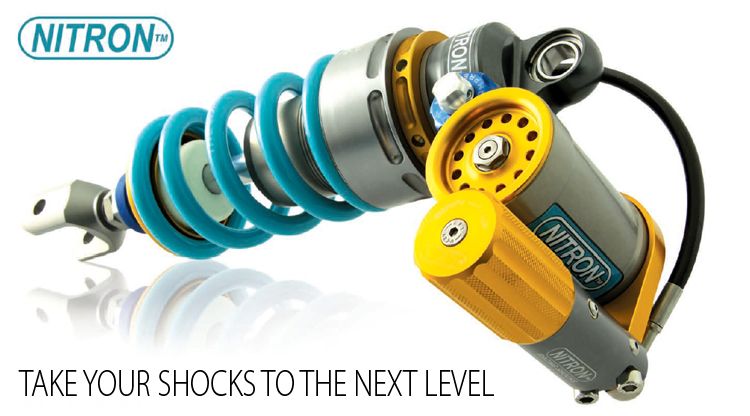 Knowing why you’re turning this knob or tightening that collar will help you make more sense of what you’re doing and ultimately make you a better shock adjuster.
Knowing why you’re turning this knob or tightening that collar will help you make more sense of what you’re doing and ultimately make you a better shock adjuster.
So let’s dive in.
How Shocks WorkShocks are made up of two key parts:
These two parts work together, or rather against each other, to make sure you have a perfectly smooth suspension.
Springs are designed to keep your wheels on the ground. Hit a bump that sends your tires up and the springs compress so you don’t feel it. Then, they send your tires right back down so you maintain traction, acceleration, and control.
However, if you only had springs in your suspension, your ATV would constantly wobble and bounce like you were riding on a giant water bed. In practical terms, it would buck you like a bronco until you roll over or barf—whichever comes first.
That’s where shock absorbers come in. They’re the center part of your shock and consist of an oil-filled tube with a piston inside.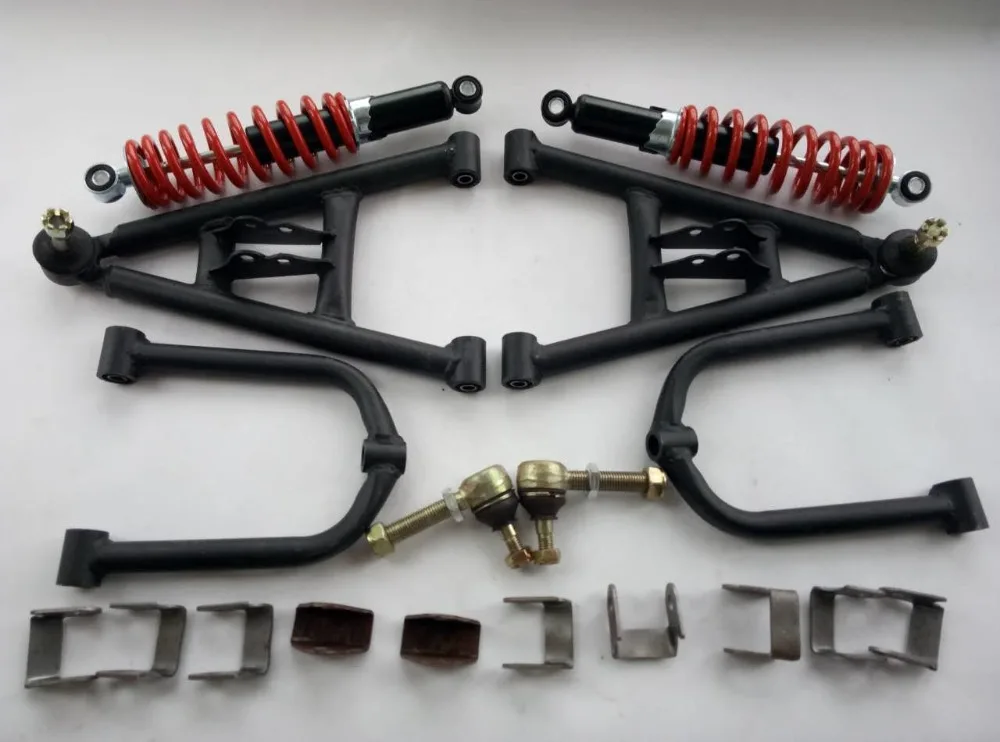 There are valves in the tube that control how fast or slow the oil can move through the piston. The result is that it stops your spring and ATV from wobbling all over the place like a bobble head every time you hit a bump. Instead, it causes your springs to compress and decompress in a controlled way.
There are valves in the tube that control how fast or slow the oil can move through the piston. The result is that it stops your spring and ATV from wobbling all over the place like a bobble head every time you hit a bump. Instead, it causes your springs to compress and decompress in a controlled way.
When they’re working together, you get all the benefits of a spring without any of the drawbacks. They keep your tires gripping the ground and make bumps smooth.
When they’re not working together… that’s when you have to adjust your ATV shocks.
Shocks use a spring paired with an oil-filled dampener to keep your ride cushy. The dampener keeps the spring from oscillating back and forth so that your quad is more stable. Setting the compression and rebound of the dampener can make or break the feel of your suspension.When it comes to actually adjusting your ATV shocks, there are a few tools at your disposal that are built into many shocks. The most prominent one is the clicker. This is the little knob, nut, or set screw that’s built into the top of the shock.
The most prominent one is the clicker. This is the little knob, nut, or set screw that’s built into the top of the shock.
Clickers affect the flow rate of the oil through the valve inside the shock. When you adjust the clicker, you’re adjusting your shock’s compression (more on that in a bit). They adjust in small increments and make an audible click when you turn them, hence “clicker.”
Different kinds of shocks have different clickers, too. Most just have a single adjuster that affects the overall compression of your ATV shock. Others have a high- and low-speed compression adjuster. The high speed adjuster will affect big suspension hits like landing a jump, while the low speed adjuster affects much smaller hits, like going through whoops or rocky terrain. Some shocks even have a mid-speed adjuster, but those are few and far between.
Most new ATVs have shocks that come with a single clicker on each shock. Factory shocks on older ATVs might have no clickers at all and can only be adjusted using the threaded collar on the shock.
So now that you know all the different kinds of clickers you could have, it’s time for you to get a handle on what compression actually is.
Compression, as the name suggests, has to do with how your shock compresses when you hit a bump or land a jump. This is different than rebound, which refers to the way your shocks act after they’re compressed.
When you’re trying to get your suspension to feel good, you’re mostly just trying to get the compression right. If you make your compression too loose, you’ll get that bouncy motion caused by your springs and you’ll end up bottoming out too often. That’s no good for your ATV or your back.
If you make your ATV shock’s compression too stiff, then you’ll start feeling every bump and rock on the trail—also bad for your back. And having it set too far either way will result in less overall control of your vehicle.
And having it set too far either way will result in less overall control of your vehicle.
The best compression rate for most is one that will allow your ATV to almost bottom out on a hard hit, but not quite.
Hand in hand with compression is rebound. It’s the rate that your shock decompresses. Not every shock has a rebound adjuster, but if it does, the rebound set screw is located at the base of the shock.
This has consequences when set too low or too high as well. If your rebound is set so stiff that it rebounds slowly, your tires won’t make it back to the ground between whoops. They’ll compress once, then just stay compressed. As you travel through whoops, you’ll be nearly bottomed out the entire time, and you’ll lose speed due to lack of traction.
This is bad, obviously, since your suspension doesn’t really act like suspension at this point.
On the flip side, if you set your rebound too loose, you’ll get that bucking action that can send you ass over tea kettle whenever you hit a bump.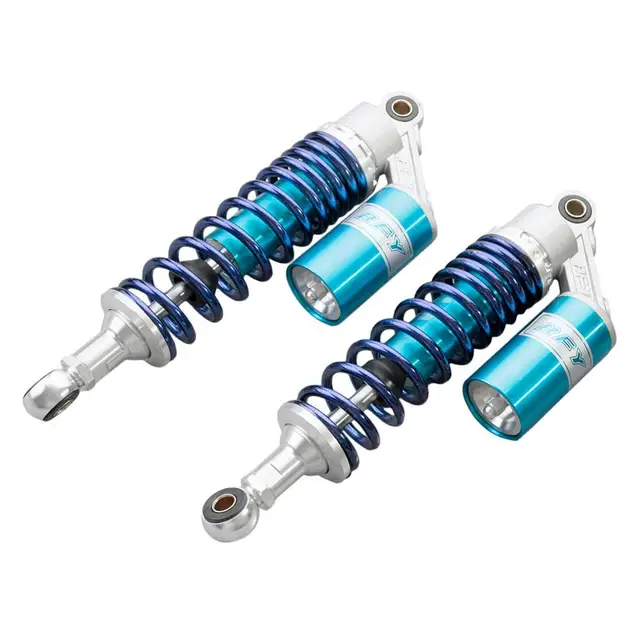 Plus, your ATV will tend to bounce up and down even after a single bump as it tries to get back to its resting position. That’s no good.
Plus, your ATV will tend to bounce up and down even after a single bump as it tries to get back to its resting position. That’s no good.
The perfect position lets your shock rebound quickly without overshooting the equilibrium so that your suspension doesn’t bounce up and down before it settles.
Let’s talk about how to dial it all in.
Adjusting the Shocks on Your ATVNow we’ll go through the steps to adjust your ATV shocks to your heart’s content. Tweaking is best done when you have quick access to a trail or ride area to test out your results. It might sound like a tedious process at first, but trust us—once you get started, you won’t want to stop.
You need to make sure your tires are aired up to the proper pressure before you do anything else.
If your tires aren’t right, you simply won’t be able to adjust your ATV’s shocks properly. They’re the foundation of your suspension, and if they feel bad, no amount of tweaking your shocks will fix it.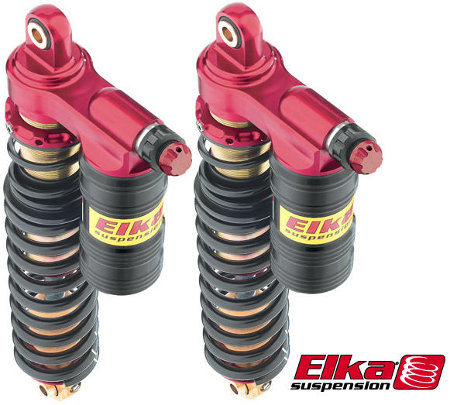
The first thing you need to do to your shocks is set your ride height. This is done using the threaded collar or snail cam on your shocks.
First, if your shocks have a threaded collar, check your owner’s manual for the typical that you want to stay within when adjusting. Unless you want your front to be lower than your rear for some reason, you should try to keep the adjustments the same in all four corners.
Then, with your machine lifted, loosen the locking collar on the top and thread the adjustment collar up or down. Tightening it down will increase ride height and give you a stiffer ride. Loosening it will lower ride height, giving you a softer ride. We usually recommend going with the lowest ride height that you’re comfortable with to start.
If you have a snail cam on the bottom of your shock, you will use that to set your preload. With a snail cam, the adjustments are opposite. So adjusting it higher will stiffen suspension and raise your ride height.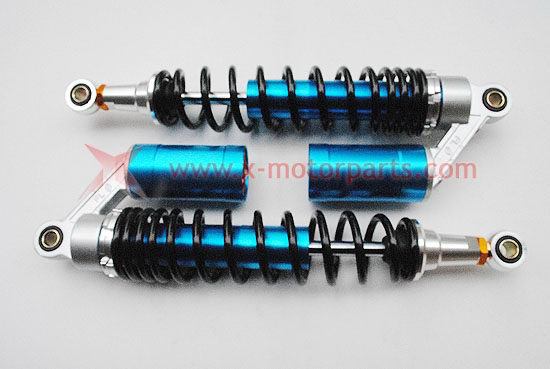 Adjusting it lower will soften the suspension and lower your ride height. Again, we recommend the lowest height that you’re comfortable with.
Adjusting it lower will soften the suspension and lower your ride height. Again, we recommend the lowest height that you’re comfortable with.
Once you have your collars set and tightened up, it’s time to start adjusting your clickers.
You can use the double collars at the top of the shock to set the preload. Refer to your owners manual to make sure you don’t get it too out of spec.Adjusting clickers is where things start to get really fun. If you have high- and low-speed adjusters on your shocks, you should start with the high speed adjuster. This is the one that affects compression with big hits, like landing a jump. If you only have one clicker, you will adjust it just like the high speed adjuster.
First, you need to find something that hits your suspension hard when you ride on it. Try to find something that you think is comparable to a typical hard hit on your average ride. We usually use a small jump.
Hit the jump. If your suspension doesn’t bottom out, turn your clickers two clicks counterclockwise.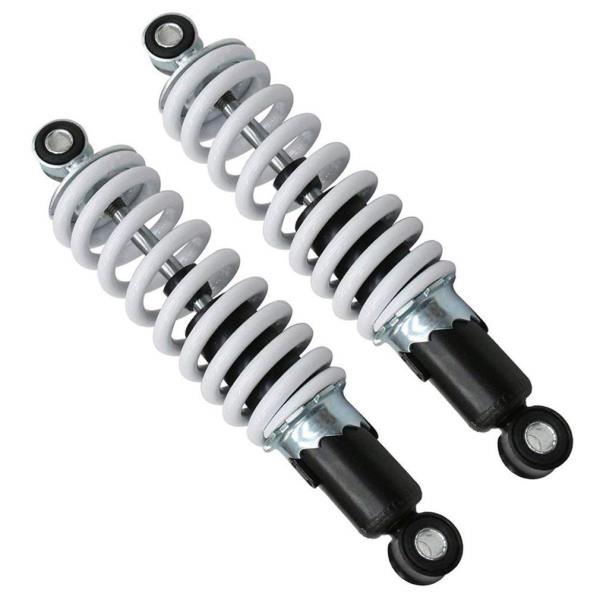 Remember: righty tighty, lefty loosey applies to your compression stiffness too.
Remember: righty tighty, lefty loosey applies to your compression stiffness too.
Then, hit the jump again. Repeat the process of loosening your compression a couple clicks and testing it on a jump until your suspension does bottom out. Next, all you have to do is turn the clickers two or three clicks clockwise and you’re good to go. You’ll have nice, plush compression that doesn’t wreck your shocks.
If you have a low speed clicker, adjusting it will take a little more finesse. You’ll need to find a section of bumps or whoops first, and take a run at it at a decent speed.
You need to pay close attention to how it feels. If you feel like you’re rolling forward and backward or left and right while you ride, that indicates that your low speed clicker is set too soft. If every single bump and rock makes your teeth chatter, then the clicker is set too stiff.
In these instances, you’ll need to set your clicker two clicks softer or stiffer and ride it again. Keep making those incremental changes and keep testing it until your ATV glides over the whoops without swaying too much or vibrating you to death.
Keep making those incremental changes and keep testing it until your ATV glides over the whoops without swaying too much or vibrating you to death.
Your rebound adjuster is located at the bottom of the shock. Like we mentioned earlier, it affects the rate at which your shock extends after it’s compressed.
The best way to test your rebound is to use a small jump, regardless of your ride style. When you land the jump, pay attention to how your suspension settles. If your ATV bounces up and down before it settles, your rebound is too loose. If it feels like your suspension stays compressed too long, it’s too tight.
It’s easier to adjust it properly if you start with it too loose—that is, with your rebound set screw or dial turned counterclockwise.
Hit the jump and feel your ATV bounce up and down. Turn your rebound screw clockwise a bit (sorry, no satisfying clicks on this one) and repeat. When you’ve adjusted it enough and your suspension pops up quickly without bouncing up and down, you’ve got it dialed in.
This is the baseline setting. You can go stiffer or softer depending on your unique riding style. You might want a stiffer rebound if you’re doing anything that’s slow and technical to make sure your suspension conforms to the terrain and doesn’t push you off a boulder too quickly. If you have a specific style that you enjoy, be sure to mess with rebound even more.
The rebound adjuster near the bottom of the shock affects how quickly your shocks extend after they’re compressed. If the rebound is too fast, your suspension will feel bouncy. If it’s too slow, your suspension will feel sticky.That’s all there is to it! With all your ATV shock adjustments made, you have the perfect combination of plush and performance. You’ll have excellent control and traction. And when you’ve put in all the work tweaking and tuning, you’ve really earned it. And it was fun, right? All you’ve got to do is ride and turn some knobs. Not bad at all.
RELATED CONTENT: shocks5
Share
84
The suspension is considered to be one of the most important functional components of motorcycle equipment, since it is it that is responsible for the rider's comfort in the process of movement, and also provides a soft passage through problem areas of the terrain. The sale of ATVs implies a special attitude to this unit and detailed advice on the procedure for its adjustment and maintenance.
There are dependent and independent types of suspension. The second type is most often found among modern ATV models. Each motorist can adjust it in accordance with his own preferences, as well as operating conditions.
Among the advantages of ATV dependent suspension it is worth noting:
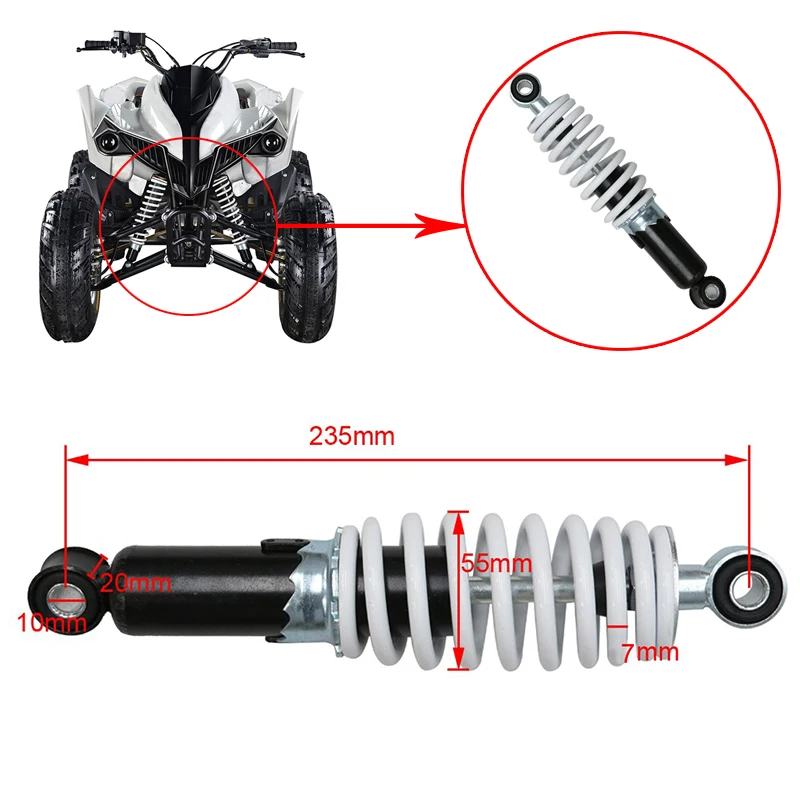
Such attractive performance of this suspension is due to the extreme simplicity of its design.
Regardless of the type of ATV suspension, there are some regularities in its structure. There are front and rear suspension types. In order for 125cc ATVs to boast a high level of ride comfort, the front suspension is usually made independent. Often it is supplemented with elements such as a pair of wishbones and telescopic shock absorbers. As for the rear suspension, it can be dependent, independent or semi-independent, and can also be equipped with pendulums and shock absorption devices.
Suspension of any ATV is a set of spare parts, assemblies and assemblies located between the motor vehicle body and the track. It consists of the following components:

ATV suspension also performs many important functions, namely:
Based on this, the suspension, despite the relative simplicity of its device, plays a significant role in the design of any vehicle.
If your vehicle's suspension is not working properly or has failed, you may need to replace some of its components with new ones.
The following ATV suspension components most often fail:

To repair the suspension of an ATV without outside help, it will be enough just to find the failed elements of motorcycle equipment and replace them.
By adjusting the ATV's suspension for yourself, the rider will be able to get maximum pleasure and comfort in the process of driving. It is especially important to correctly configure this aspect in sports models of motorcycles. The fact that it is time to adjust the ATV suspension is indicated primarily by uneven tire wear, as well as the presence of problems and discomfort when driving a motorbike.
Adjust the suspension of a motor vehicle as follows:
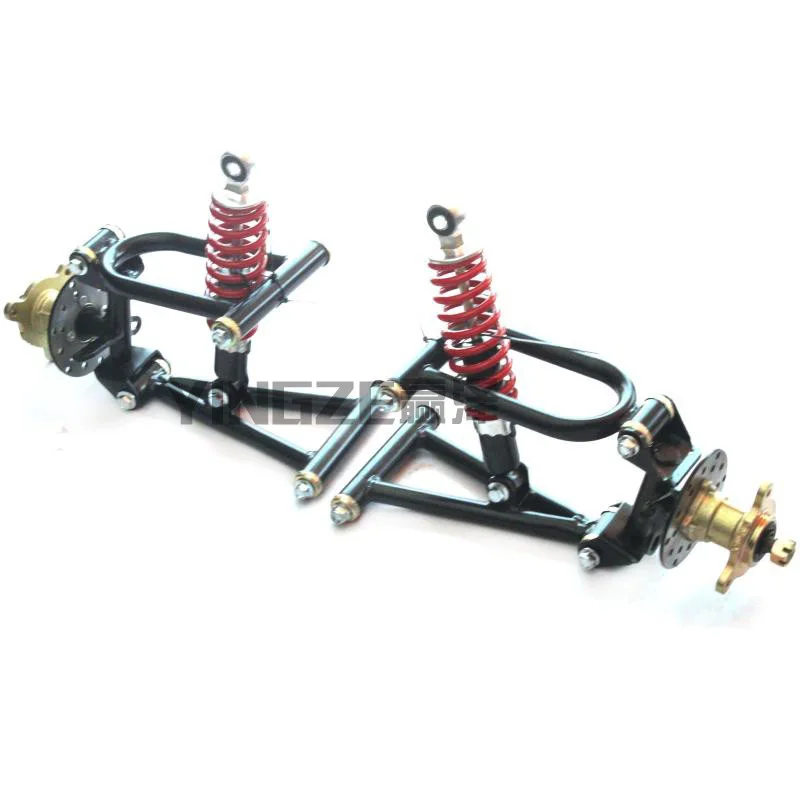 It is better to reduce compression in the case when slippage is observed.
It is better to reduce compression in the case when slippage is observed. Before starting to adjust the ATV's suspension, it is recommended to write down all the initial values so that if you do not like the result, you can easily return the motorcycle to its previous state.
In the absence of experience in the repair and maintenance of motorcycles, it is strongly recommended that if you find any problems with the suspension, contact the specialists at the service center. The sooner you decide to repair an ATV, the better, because driving it with a broken suspension is not only inconvenient, but also quite dangerous.
05/29/2021 1723
Have you ever read an article about ATV or Side-by-Sides and come across completely unfamiliar terminology? But what if you knew, let's say, that they are only about the thermohydraulic dissipation of kinetic energy? If this knowledge doesn’t make it easier, then it’s time to really understand the issue.
From the very first day, when you are just starting to study the chassis and suspension of your new “iron horse”, it can be easy to confuse a lot of new words and unfamiliar terms that seem to be familiar to absolutely everyone around. Moreover, knowledge (or not knowledge) of this terminology can help you improve your car (or, accordingly, achieve the opposite result). It’s worth understanding it in order to at least find the right suspension settings for your ATV or ATV.
So, in this article you will find a brief "dictionary" of key terms. Armed with new knowledge, you can unleash the true potential of your machines.
First, let's try to get acquainted with the types of settings and their names.
Spring preload: is the pressure setting (or preload) on the shock spring. A large number of basic shock absorbers have only this setting function. This adjustment is made using a female threaded ring on the shock body and a locking ring, which gives more adjustment possibilities, or a five-sided ring, the settings of which are limited to these five levels. Increasing the pressure makes the ride harder and increases the vehicle's ground clearance. Loosening the preload makes for a smoother ride, but can cause the car to hit the bottom of the track.
Increasing the pressure makes the ride harder and increases the vehicle's ground clearance. Loosening the preload makes for a smoother ride, but can cause the car to hit the bottom of the track.
This photo of a FOX shock shows how to preload the spring using the female ring on the top of the spring (turn clockwise).
Compression adjustment: this setting controls the movement of the rod in the shock body. There are two types of compression: slow and fast. There are two types of compression adjuster: adjusting knob or slotted screw head. These regulators control the flow of fluid into the damper. If the shocks compress too fast, you need to slow down the flow rate, if they are too stiff, you can speed it up. With strong compression resistance, breakdowns after a jump are prevented, the car behaves better when passing large irregularities. As for low resistance, the situation is reversed, the car will perform well when passing small bumps in the track, but strong jumps can cause problems.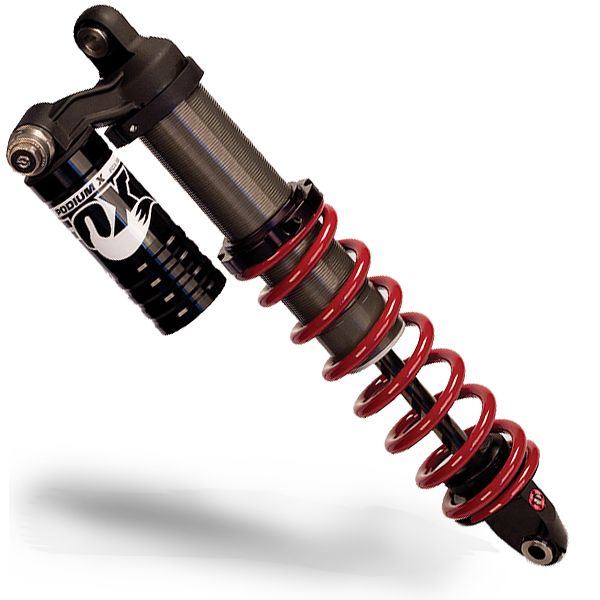 This setting is especially relevant for ATVs and ATVs, with it you can control the suspension when passing uneven terrain, make jumps.
This setting is especially relevant for ATVs and ATVs, with it you can control the suspension when passing uneven terrain, make jumps.
At this point, the driver can only hope that the shock settings are tight enough.
Rebound: this is the speed with which, after compression, the rod returns back to its original state - the one that was before compression. This setting controls the speed of this bounce. This will give you more control over your ATV or Side-by-Side as this setting ensures that the wheel is always in contact with the ground. Adjustment is carried out using a slotted screw or ring, which is twisted at the base of the shock absorber.
After the situation with the settings has become more or less clear, you can proceed to the study of the most common terms.
ground clearance: is the suspension height measured with a fully equipped driver and his equipment in the car.
Sag under weight (cars): this term defines the sagging of the suspension under the own weight of the car, without a driver.
Even the ATV's own weight (without rider) compresses the suspension slightly. This is called weight sagging.
Sag or Driver Weight Sag: this is the data on the full suspension travel when a fully equipped rider sits in/on the vehicle in the starting position. Usually, this value is 30% of the full suspension travel.
Pogoing: this term is used when the spring reverses too quickly due to certain settings and the shock absorbers, most often the rear ones, get the car's rear suspension out of control.
There are many varieties of shock absorbers - for every taste and budget.
Standard fixed: these are gas-filled shock absorbers that can be seen in budget models of ATVs. They are not regulated.
They are not regulated.
With spring preload: such a shock absorber can be found in sports cars for beginners or utility ATVs. The preload is usually adjusted by tightening the adjusting nut or loosening it.
Compression adjustable: often found in sports cars, such a shock absorber is most often equipped with a spring preload function. Such a shock absorber can be produced both with a nitrogen tank located on the side and without it.
You can see the pressure adjustment knob located on top of the King's piggyback receiver.
Compression and rebound adjustable: this type of damper will be fitted with a separately attached piggyback receiver or nitrogen tank. They will also feature preload rings, compression and rebound adjustment knobs. This shock will give the rider maximum customization options.
Pneumatic dampers: Air springs have been on the market for a long time, and the FOX brand has become one of the leaders in the industry.